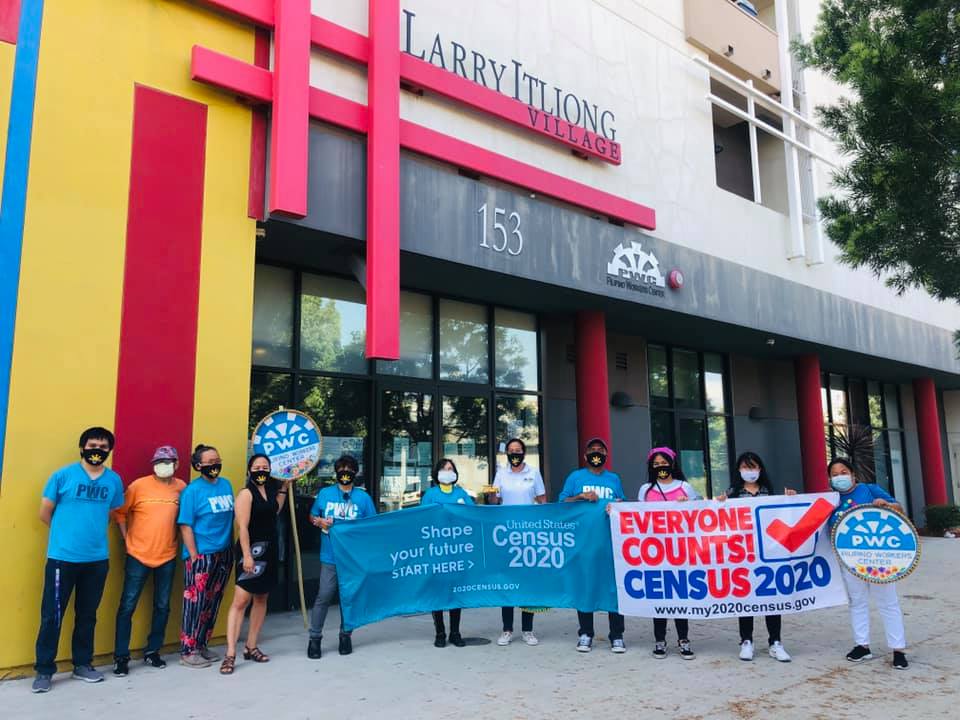
AS the deadline to respond to the 2020 Census approaches on Wednesday, September 30, Filipino American community leaders are making a final push to ensure that Fil-Ams are all counted across California.
Census partnership specialists and community-based organizations are staking out in front of supermarkets and other high foot traffic locations to remind members to fill out the nine-question survey, which should take no more than 10 minutes to complete.
The decennial enumeration — which can be done by phone (844-330-2020 for English), online (my2020census.gov), or mail — counts where individuals live as of April 1, 2020.
That includes young children and infants, roommates, and family members or friends staying at the household, even if temporarily. In addition to English and Spanish, completing the census online or by phone can be done in 11 other languages, including Tagalog (844-478-2020).
Heading into the final week of September, 68.6% of households in California have self-responded to the census questionnaire. Meanwhile, 63.9% of households in Los Angeles County have completed theirs, according to the 2020 Census response map.
By the end of August, 69.6% of Tagalog-speaking households in the county have filled out their surveys, above the total county’s average, as previously reported by the Asian Journal.
Among the last-ditch efforts has been the week-long California Gold Coast Census Caravan, beginning in San Diego and ending in Sacramento at the end of the week.
Along the way, organizers are stopping in cities and neighborhoods with sizable Fil-Am populations, such as Carson, Artesia, Historic Filipinotown in Los Angeles and Delano, and are talking to individuals about what resources the census results bring to their communities.

A common misconception that has prevented some individuals from answering is that the survey only applies to homeowners, but one of the questions asks whether the home is owned, rented, or occupied without payment or rent.
“There’s a misunderstanding of people thinking that if they’re not the homeowner or the head of the household, then they don’t have to do the census. But no, it’s absolutely for anyone to fill out,” Ivy Daulo, partnership specialist for the Census Bureau in the LA region, told the Asian Journal.
The results guide how over $675 billion in federal funding will be allocated to states annually. This year alone, the spread of COVID-19 and raging wildfires across California have underscored the need for communities to get these critical resources.
“The data that’s gathered by the Census Bureau is not only helpful with future emergencies, but definitely with recovery efforts, such as what is going on with COVID-19 and the wildfires,” Daulo said. “When we know how to service the community, they are able to tailor their efforts to the people, the homes, and also the businesses in each of those affected areas.”
States lose approximately $1,000 per person each year for the 10 next years for those who are missed in the count.
“We should be getting our fair share of resources and that doesn’t happen when we are hidden and we are not counted…We need to make sure our voices are heard on issues that matter to us, and get the education that we need for our youth and the supportive services like after-school activities,” said Aquilina Soriano Versoza, executive director of the Pilipino Workers Center in Historic Filipinotown, which was a caravan stop on Monday, September 21.
Following the deadline, the U.S. Census Bureau in December will deliver the apportionment counts to the president and Congress as required by law. Each state will receive the results by March 31, 2021 as they determine how many representatives states get in Congress and are used to redraw legislative districts based on population changes.
Officials and organizations remind community members that the census does not ask for citizenship status, financial income or social security number. The information collected will also not be shared with other government agencies.
“Another big barrier is just people not knowing that it is completely confidential. All information that is provided to the Census Bureau is protected under Title 13. All of our census staffers out in the field, whether they’re knocking on doors or on-site in front of supermarkets, take an oath to protect that information,” said Daulo.
According to the Census Bureau’s American Community Survey (ACS) in 2018, 4,037,564 Filipinos are estimated to be living in the country, compared to the 2010 Census, which counted 3.4 million Filipinos.
The five states with the largest Filipino populations include: California (1,651,933), Hawaii (367,364), Texas (194,427), Washington (178,300), and Nevada (169,462), according to the 2018 data.
Even if Fil-Ams have responded, Daulo said they can do their part in the last week by reaching out to friends and family to ask if they’ve completed their forms. Census enumerators are continuing to survey non-responsive households door-to-door each day of the week, and carry an official census bag and ID badge.
“Time is running out and let your friends and family know that if census workers come to their door, make sure they cooperate and know that the takers are there to help them respond,” Daulo said.




